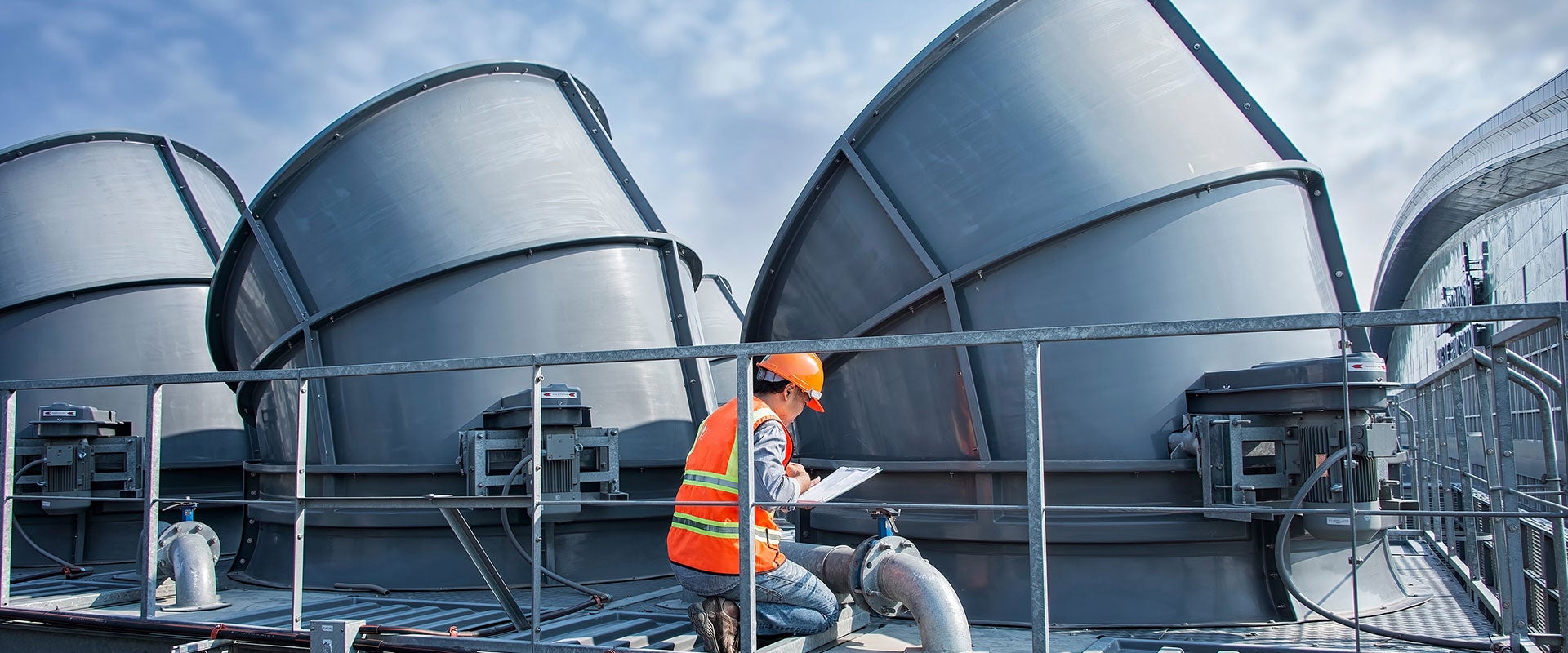In this Executive Insights, L.E.K. Consulting reflects on trends impacting companies in the HVAC sector and the opportunities those trends present for accelerated value creation.
Several global themes have guided change in the European HVAC sector: the critical importance of new HVAC systems purposely built to achieve decarbonisation goals, climate change, advancements in technology, energy costs, skill shortages and emergence of new business models. The sector is characterised by varying levels of housing stock quality, partial consolidation, fragmented value chains and historically dormant characteristics, and is suddenly the focus of attention as regulation, technology and customer preferences evolve quickly.
The Viessmann merger with Carrier in 2023 brought additional awareness to the sector and begs the question, what is the strategic future of a European HVAC player?
Further, what are the key trends and challenges that manufacturers, distributors, installers and service providers in the HVAC space are facing today and in the near future, and what are the resulting implications for operational and strategic development? The answers to these questions are highly relevant to active market participants and potential investors.
As the themes cited above work their way through the business cycle, we can specifically identify a wide range of secular trends triggering change and creating growth and organisational transformation opportunities in the HVAC market:
- Climate change and sustainability imperatives
- Increasing and volatile energy costs
- Urbanisation, evolving ways of working, and ultramodern building techniques
- The expansion of the regulatory landscape and building standards
- Technology and digital advancements
- Skill shortages
- Growth of integrated solutions and innovative business models
1. Climate change and sustainability imperatives
The worldwide building and construction sector contributes to c.30-40% of all carbon emissions and hence is critical to achieving the world’s decarbonisation goals. In Europe particularly, the vast majority of building emissions are attributed to heating systems. It thus is a central agenda point for governments and investors to address, and an opportunity for building product manufacturers to offer sustainable solutions and systems. Most EU states are promoting a range of low-carbon technology options, including heat pumps, better insulation, smart controls and solar power via a combination of regulatory actions and subsidy programmes.
Climate change is causing significant increases in summer temperatures across geographies, resulting in the rise of AC adoption, even in Northern and Central Europe.
Moreover, sustainability trends are pushing higher expectations for commercial and residential climate control and building automation as a means for achieving better health outcomes for occupants.
2. Increasing and volatile energy cost
The Russia-Ukraine war has had obvious effects on energy pricing. Add to that the looming role of carbon emission tariffs in the region, and the midterm cost trajectory for fossil fuels is expected to continue to rise.
Recent cost increases have further highlighted the importance of energy-efficient technologies. Heating system choices (e.g. heat pumps), smarter energy controls, dynamic energy management (home energy management systems) across emerging energy sources (e.g. solar), and better building design are giving rise to an expanding set of products, propositions and solutions that are gaining traction in the market.
3. Urbanisation, evolving ways of working and ultramodern building techniques
Urbanisation is expected to continue at a rapid pace. By 2050, 64% of the global population is expected to be living in urban areas. Higher population density in urban areas is resulting in real estate tightening and more complex building structures. Thus, better space utilisation and efficient indoor climate management are becoming even more important. For HVAC systems, there will be emphases on compact solutions, early integration at the design stage and adoption of sophisticated digital models for more accurate energy modelling.
Moreover, post-Covid working patterns include increased use of hybrid working, and effective working environments are a core element of an employer’s value proposition to attract and retain top talent. Green certifications for buildings using low-carbon HVAC technologies and smarter HVAC controls are all gaining traction as a result.
4. The expansion of the regulatory landscape and building standards
Building standards and regulations pertaining to insulation, heating efficiency and sustainable energy sources are evolving quickly and are becoming more complex. Examples include the Energy Performance of Buildings Directive (EPBD) on a European level and the magnitude of national regulations and incentives, such as the German Gebäudeenergiegesetz GEG that was discussed and adjusted heavily in June 2023, and the UK Boiler Plus regulation.
Building standards are evolving to adopt modern technologies and more climate-friendly solutions, but still vary significantly between countries. For example, in Central and Northern Europe, water-based systems for heating and gas hot water systems are typical, whereas in Southern Europe, forced-air systems dominate the market for room heating, and water is generally heated by electricity. France has a long tradition of electric water heating because of historically lower-priced nuclear energy. The quality of insulation of residential and commercial buildings also varies significantly between countries. In the UK, for instance, most housing is not suitable for heat pump systems because of less-efficient insulation practices.
The evolving and varied landscape requires a market participant to gain an active understanding of building standards and regulations by geography in order to tap into appropriate opportunities and develop a fit-for-purpose product portfolio.
5. Technology and digital advancements
From new heat pump technologies to solar panels to smarter controls of HVAC systems to dynamic home energy management systems, the HVAC technology landscape is moving quickly. We expect the end-state of the technology mix to be highly fragmented and vary significantly by country, given variations in building standards, regulation and supply chains across markets.
Building Information Modelling (BIM) integrated planning and energy consumption simulations are becoming more common across building segments, with architects and design consultants incorporating energy consumption, air-quality management and well- being more thoroughly in their technical planning.
Online channels are also gaining traction among more tech-savvy installers and increasingly interested consumers (who would have historically left HVAC system choices to their installers). These consumers more and more are doing their own research and are procuring HVAC solutions from full-service providers.
These trends imply a wide range of implications and opportunities for HVAC players — but players must first master a modern and rapidly evolving product portfolio, ease of integration with BIM platforms and a digital-ready channel strategy.
6. Skill shortages
All these ongoing changes in underlying technologies and needed capabilities have a significant impact on the installer base, which is not ready for them.
Technology evolution is happening faster than the corresponding skill evolution in the installer community. For instance, split system heat pumps require F-gas certification, which currently has limited adoption in several European countries. Furthermore, most heating installers don’t have the experience that most new technology solutions require. As the breadth of technology options expands and the requirement for interoperability of systems increases, the complexity of the installer’s work is keeping pace. In the context of the broader construction sector struggling to attract sufficiently skilled young tradespeople, this specialist segment is among the least prepared from a labour supply perspective.
These labour shortages will take time to correct. Meanwhile, they are creating some interesting opportunities for market participants. To maintain satisfactory service levels, installers require training, support and easy-to-install products. We have observed that brands that are investing in training and support are significantly gaining installer trust, thereby raising loyalty and generating demand for more product. Easy-to-install systems (e.g. monoblock heat pumps) provide a significant barrier to competitors. There is demand for more ‘plug and play’ products that can be retrofitted into existing systems vs a complex overhaul, providing opportunities for products like e-TRVs and easy-to-use smart controls. In the same vein, there is a fast-growing opportunity to provide ‘solutions in a box’ that reduce the complexity installers face in choosing the right set of componentry for a given project. There is also increased demand for integrated product and service offerings (further covered below), the effect of which is the disintermediation of wholesalers, and resulting in peace of mind for end-customers knowing that their systems can be delivered without any installer involvement or risk to quality.
7. Growth of integrated solutions and innovative business models
Historically, HVAC systems have been quite fragmented across the value chain, with various components such as boilers, pipes, manifolds, radiators, valves, etc. produced by separate companies and installed together by a contractor. HVAC systems also have limited interaction with other applications and technology systems (e.g. energy sources, insulation, roofing) in a building. This fragmented and siloed approach has been contributing to poor energy efficiency of the existing building stock, has been creating economic inefficiencies across the value chain, and is sub-optimal for leveraging technology to create better comfort and well-being outcomes for the building occupants.
Tapping into these, we observe an emergence of several forms of horizontal integration and innovation across the HVAC value chain. Businesses like Boxt, Heatable and 1Koma5° are providing integrated offerings to end customers, thereby lowering complexity and providing better overall system performance. There are also numerous ongoing pilots in Europe aiming to provide heat/ climate control as a service, where the supplier is paid on outcomes instead of individual componentry, fuel, etc. Energy price fluctuations create a challenge for such models currently. However, growth in locally produced and stored solar power could make such models attractive for certain segments of the market.








